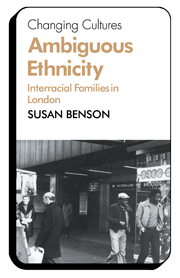There are Italians with black skinPosted in Articles, Europe, Interviews, Media Archive, Politics/Public Policy, Social Science, Social Work, Teaching Resources on 2011-10-28 21:13Z by Steven |
There are Italians with black skin
Africa News
2010-05-28
Interview with Sabrina Jacobucci, President of Association of Afro-Italian Children
To be black and Italian at the same time is a new reality the Italian society is still struggling to accept. Adoption and increase in the number of mixed marriages between Italians and Africans are gradually leading to an increase in the number of Black Italian children, the so-called Afro-Italians. But the Italian society seems unprepared to cater for the social and educational needs of these children. In this exclusive interview with Africa News, Ms. Sabrina Jacobucci, aka Flora NW, President of the Association of Afro-Italian Children, reveals the reasons that led to the foundation of the Association, the problems mixed heritage children face in the country, and suggests what should be done to make the education system more responsive to the needs of mixed heritage children.
Sabrina, please share with us the story behind the formation of the Association of Afro-Italian Children.
The Association was initiated by an Italian mother of two mixed-race children born abroad, who, when returning to Italy, started to express the need of meeting other black children since they were the only black children in school, in their block, whenever they went to the park or to after school activities. They started to ask: why aren’t there children like us on TV or on advertisements? The Italian mother started to look for a group where children could meet other black children, but could only find associations of various migrant communities, or churches which catered for the Nigerian, or the Congolese or the Ghanaian and so forth. The children could not, though, identify with any ethnic or migrant community in particular, being black Italians. So to answer the children’s need to see themselves represented, this woman started to look for other parents of black or mixed-race children to set up a group where the kids could, at least once a month, meet and feel stronger, in a society where to be black is often neither appreciated nor valued.
When was it founded?
A couple of years ago.
Who was involved?
I, the white Italian mum of Black Italian daughters (who also share an English, Nigerian and Jamaican mixed parentage), had the idea of setting up a group where my children could meet other Afro-Italian children. I thought gathering other parents of black children willing to meet would be easy.
Unfortunately, the number of black and mixed-race children is very low in Rome, especially in my area. So I started to “advertise” on the web, first of all on www.insenegal.org, a site which has a rich forum where a number of mothers of children having a Senegalese father write. But most of them weren’t from Rome. So I wrote to other parents’ forum, but they were attended mostly by parents of white children. And then, on one of these forums, I met the adoptive mum of a girl of Nigerian parentage, who shared the same need as mine. We were then joined by other adoptive and biological parents of black and mixed-race children, thanks to the website I manage http://afroitaliani.splinder.com, where I announce our meetings and other activities…
…From your experience, in Italy, are mixed heritage children facing different problems from those of other children?
Mixed race children often face the same issues black mono-heritage children face. No matter their skin tone, they are seen as black and therefore it is healthier and more empowering for them to identify as such, without denying their dual heritage at the same time. A racist is not going to ask them whether they are mixed-race. And yes, black and mixed race children definitely face different problems from those of white children…
…Do you think the education system in Italy fully caters for the needs of mixed heritage children?
I don’t think so. I don’t think the education system has even started to consider or understand the needs of mixed heritage children or of black children for that matter. They are invisible to the system because they are not even seen as a group. Also, mixed heritage is a concept that encompasses too broad a category. Our experience is that of parents of mixed-race children, black/white, and as such they face the same problems of institutional racism embedded in the education system black “mono-heritage” children face. I think that to separate mixed-race children from the black children amounts to “fractioning” the black community, and at this moment, when the community needs unity and strength, is not advisable…
Read the entire interview here.


